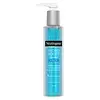What's inside
What's inside
 Key Ingredients
Key Ingredients

 Benefits
Benefits

 Concerns
Concerns

 Ingredients Side-by-side
Ingredients Side-by-side

Water
Skin ConditioningGlycerin
HumectantCocamidopropyl Hydroxysultaine
CleansingSodium Cocoyl Isethionate
CleansingSodium Methyl Cocoyl Taurate
CleansingSodium Hydrolyzed Potato Starch Dodecenylsuccinate
Potassium Acrylates Copolymer
Hydroxyacetophenone
AntioxidantPhenoxyethanol
PreservativeParfum
MaskingLinoleamidopropyl Pg-Dimonium Chloride Phosphate
Polyquaternium-10
Polysorbate 20
EmulsifyingSodium Hydroxide
BufferingDisodium EDTA
Citric Acid
BufferingEthylhexylglycerin
Skin ConditioningHydrolyzed Hyaluronic Acid
HumectantWater, Glycerin, Cocamidopropyl Hydroxysultaine, Sodium Cocoyl Isethionate, Sodium Methyl Cocoyl Taurate, Sodium Hydrolyzed Potato Starch Dodecenylsuccinate, Potassium Acrylates Copolymer, Hydroxyacetophenone, Phenoxyethanol, Parfum, Linoleamidopropyl Pg-Dimonium Chloride Phosphate, Polyquaternium-10, Polysorbate 20, Sodium Hydroxide, Disodium EDTA, Citric Acid, Ethylhexylglycerin, Hydrolyzed Hyaluronic Acid
Water
Skin ConditioningSodium Laureth Sulfate
CleansingSodium Chloride
MaskingCocamidopropyl Hydroxysultaine
CleansingLauramidopropyl Betaine
CleansingSodium Cocoyl Sarcosinate
CleansingTea-Cocoyl Glutamate
CleansingDi-PPG-2 Myreth-10 Adipate
EmollientAloe Barbadensis Leaf Juice
Skin ConditioningPEG-120 Methyl Glucose Dioleate
EmulsifyingSucrose
HumectantSodium Hyaluronate
HumectantCetyl Triethylmonium Dimethicone PEG-8 Succinate
Butylene Glycol
HumectantHexylene Glycol
EmulsifyingPolyquaternium-7
Laureth-2
CleansingCaprylyl Glycol
EmollientSodium Sulfate
Tocopheryl Acetate
AntioxidantEDTA
Disodium EDTA
Phenoxyethanol
PreservativeWater, Sodium Laureth Sulfate, Sodium Chloride, Cocamidopropyl Hydroxysultaine, Lauramidopropyl Betaine, Sodium Cocoyl Sarcosinate, Tea-Cocoyl Glutamate, Di-PPG-2 Myreth-10 Adipate, Aloe Barbadensis Leaf Juice, PEG-120 Methyl Glucose Dioleate, Sucrose, Sodium Hyaluronate, Cetyl Triethylmonium Dimethicone PEG-8 Succinate, Butylene Glycol, Hexylene Glycol, Polyquaternium-7, Laureth-2, Caprylyl Glycol, Sodium Sulfate, Tocopheryl Acetate, EDTA, Disodium EDTA, Phenoxyethanol
 Reviews
Reviews

Ingredients Explained
These ingredients are found in both products.
Ingredients higher up in an ingredient list are typically present in a larger amount.
Cocamidopropyl Hydroxysultaine is a synthetic cleansing agent, though it is derived from coconut oil.
It is used to enhance the texture of products by boosting lather and thickening the texture. As a cleanser, Cocamidopropyl Hydroxysultaine is mild.
Disodium EDTA plays a role in making products more stable by aiding other preservatives.
It is a chelating agent, meaning it neutralizes metal ions that may be found in a product.
Disodium EDTA is a salt of edetic acid and is found to be safe in cosmetic ingredients.
Learn more about Disodium EDTAPhenoxyethanol is a preservative that has germicide, antimicrobial, and aromatic properties. Studies show that phenoxyethanol can prevent microbial growth. By itself, it has a scent that is similar to that of a rose.
It's often used in formulations along with Caprylyl Glycol to preserve the shelf life of products.
Water. It's the most common cosmetic ingredient of all. You'll usually see it at the top of ingredient lists, meaning that it makes up the largest part of the product.
So why is it so popular? Water most often acts as a solvent - this means that it helps dissolve other ingredients into the formulation.
You'll also recognize water as that liquid we all need to stay alive. If you see this, drink a glass of water. Stay hydrated!
Learn more about Water